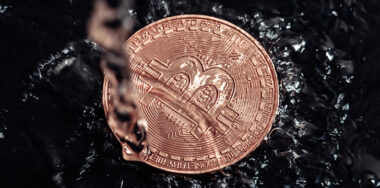| Getting your Trinity Audio player ready... |
Today, on January 9, Bitcoin officially turned 13 years old.
The peer-to-peer electronic cash system envisioned by Satoshi Nakamoto has been fully restored, and what a year it has been for the original Bitcoin. Yes, it’s been a crazy ride with some unpredictable twists and turns, but finally, as it enters its teenage years, Bitcoin is scaling to hundreds of thousands of on-chain transactions per second and is attracting a tsunami of development as those who choose to inform themselves realize the unbounded potential of BSV.
A quick recap—Bitcoin’s epic life so far
For those who don’t know, or those who’d like a quick refresher, here’s a recap on Bitcoin’s life so far.
- On January 9, Satoshi Nakamoto released Bitcoin v0.1 to the world. He made it known that it was a peer-to-peer electronic cash system that was set in stone on delivery.
- However, on January 3, Satoshi had already hard-coded the Bitcoin Genesis Block. Unlike the others, this one wasn’t mined. Most consider January 9 to be Bitcoin’s official birthday because this was the point at which others could participate and mine blocks.
- In these early days, Satoshi fielded some questions about Bitcoin. He explained to Mike Hearn that it could already scale to rival Visa’s transaction limits using existing hardware. It was in this early period that he was convinced to implement a temporary 1MB block size limit to prevent a spam attack on the network.
- After patiently explaining almost every element of Bitcoin, Satoshi left in 2010 and moved on to other things. Soon after, misguided and malicious actors moved the source code from SourceForge to GitHub and locked Satoshi and Gavin Andresen out.
- Over the next few years, fundamental changes were made to the Bitcoin protocol. In 2012, Pay to Script Hash (P2SH) replaced multi-sig wallets. By 2016, Replace by Fee (RBF) was introduced, disrupting reliable instant transactions.
- By 2017, the Bitcoin civil war, also known as the block size war, was well underway. Dr. Craig Wright was advocating for big blocks. However, this didn’t suit the agenda of BTC centralized core developers. So, in August 2017, the Bitcoin network split, and Bitcoin Cash (BCH) continued with Satoshi’s original vision. At the same time, SegWit was introduced, removing digital signatures from Bitcoin transactions.
- Fundamental disagreements soon boiled over within BCH. On one side was Dr. Craig Wright, advocating for unbounded blocks and keeping things legal, and on the other was Roger Ver, a misguided anarchist who wanted to once again change the Bitcoin protocol and promote a system to facilitate crime. In November 2018, the network split again with big blockers continuing the work on BSV.
- In February 2020, BSV developers had successfully restored the original protocol fully. They called this momentous event ‘Genesis.’ It removed maximum block sizes and restored the original Script language.
- Since then, BTC and BCH have descended into chaos, with conflicting narratives of digital gold, an anarchist monetary system to bring down governments, a Wall Street investment asset, and encrypted digital energy (thanks for the laugh, Mr. Saylor) all competing for airtime. Meanwhile, BSV has continued to scale, has successfully fended off illegal attacks on the network, and has seen a surge in development on the protocol.
Going forward—Bitcoin unbounded
It’s been a crazy 13 years, but finally, as it enters life as a teenager, Bitcoin has cast off the shackles of those who either ignorantly or maliciously kept it down, and it’s already flying high.
Where is BSV today, as it enters its 14th year?
- It’s processing over 4 million transactions daily at the time of writing. And yes, these are all on-chain, providing transaction fees to miners who compete for BSV blocks.
All I wanted for #NewYear . . . was over 4 million transactions on the #BSV network over a 24 hour period
Another nice milestone but just another step on the path to fulfill #Bitcoin Satoshi Vision
Source: https://t.co/Hxbg9O4ooE pic.twitter.com/priYsK8YoR
— Jimmy Nguyen (@iamJimmyWIN) January 2, 2022
- BSV is witnessing a mass migration of developers who are waking up to the repeated false promises of Vitalik Buterin and the Ethereum Foundation and other unscalable blockchains. Just ask Adam Kling and the team behind Crypto Fights.
- The fees are holding steady at $0.0004 on average. That’s over 11,000 transactions on BSV for the cost of one on Ethereum, BSV’s alleged main competitor and the so-called decentralized world computer.
- BSV has already cracked 50,000 TPS in a public demonstration, and Teranode is set to make this look like child’s play. Before long, BSV will be able to handle millions of transactions per second.
And that’s just the start of it. With the restoration of the original Bitcoin protocol and all of the developments mentioned here, Satoshi is being proven right about everything. Bitcoin does scale on-chain, it is Turing complete, and it’s going to be the one global chain he spoke of.
Happy 13th birthday, Bitcoin. It’s only going to get better and at a much faster pace from here!
New to blockchain? Check out CoinGeek’s Blockchain for Beginners section, the ultimate resource guide to learn more about blockchain technology.









